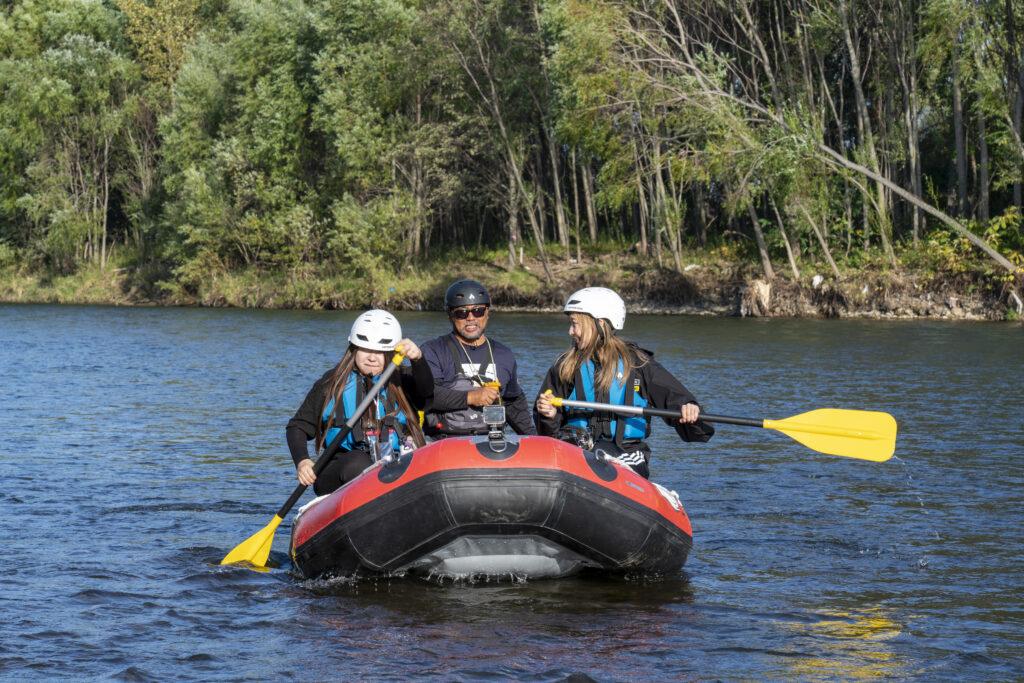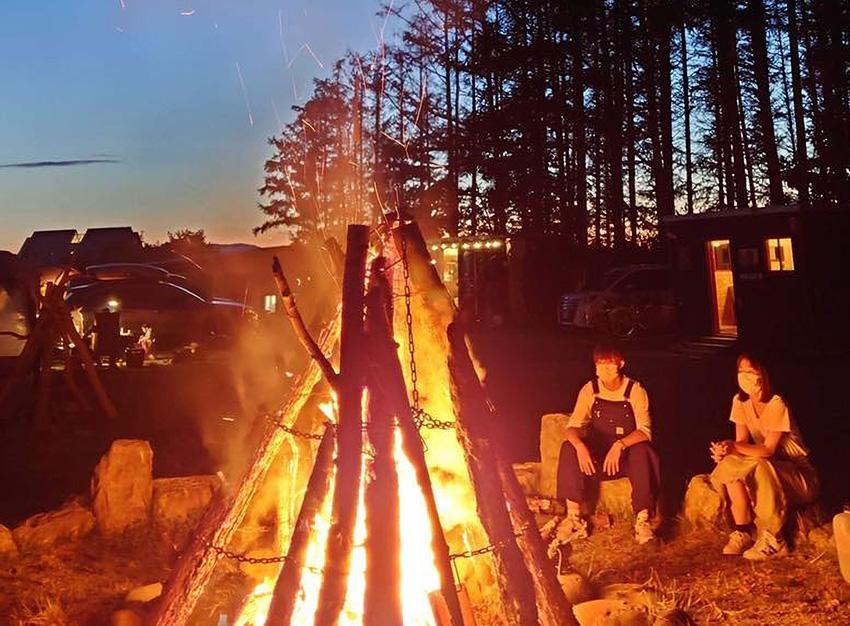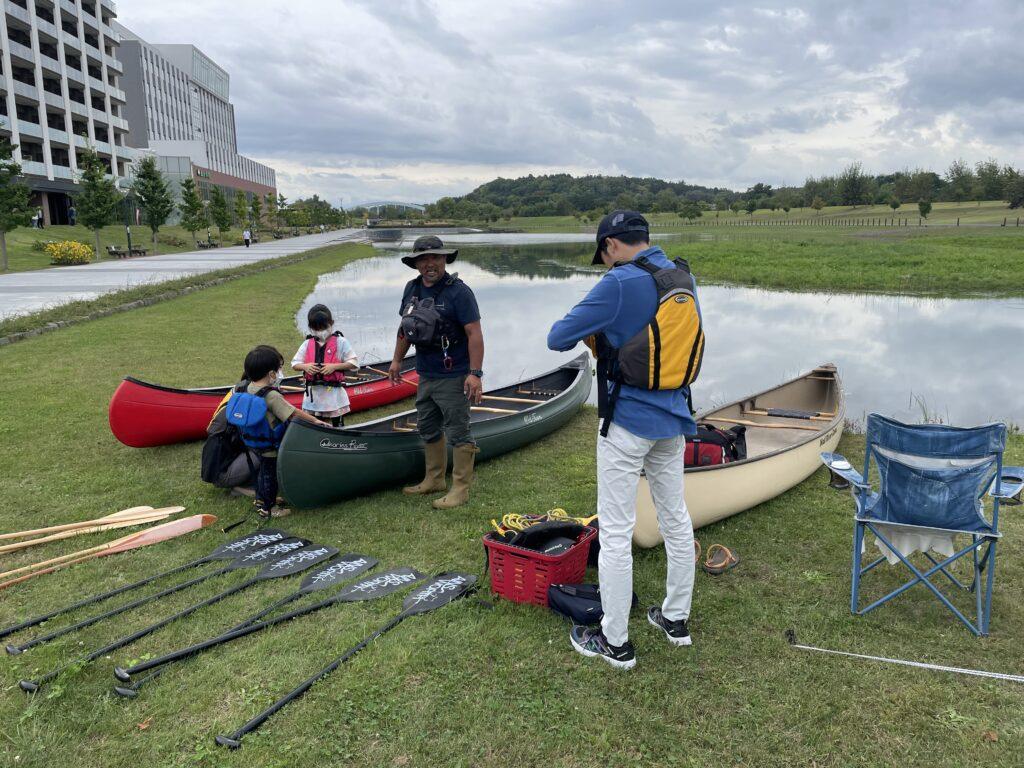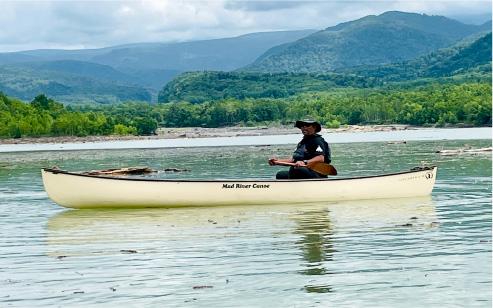Canoe guide
Outdoor coordinator
Takuma Okusada

Chasing a dream spread over a field in the heavy snow area.
Takuma Okusada is the representative of Field of Dreams, a Canadian canoe guide on the Ishikari River in Asahikawa City and a campsite operator in Shibetsu City.
I want many people in Hokkaido to feel the excitement I felt when I canoed down the Yukon River in Canada by myself at the age of 27. His dreams are spreading out on the field in the Daisetsu area in front of him.

Rafting in the town to feel the nature and people’s life in the basin
Mr. Okusada is currently involved in river cruise tours of the Ishikari and Chubetsu Rivers that run through the center of Asahikawa City. From Akizuki Bridge, the starting point of the tour, there are riverside forests on both banks for a while, and as you get closer to Asahi Bridge, you can gradually see the townscape. The view of Asahikawa from the river is something even locals have never seen before.
Further down the Ishikari River, past the Chikamon Bridge, at the confluence with the Osarappe River, towers the giant rock “Nautiu” of Ainu legend, standing approximately 3 meters high. The waterside area at the foot of Arashiyama, with its lush greenery, was also a hunting ground for the Ainu people, and the watershed leading from there to Kamuikotan is the site of several Ainu legends. Mr. Okusada explains the life of the Ainu people on the tour, interweaving myths into the tour.
Four rivers join at the Asahikawa River and become one large stream that continues to the Ishikari Plain. Its water source begins in the mountains of Daisetsuzan, further upstream in the valley of Sounkyo. The pure water has developed industries in the basin, such as sake brewing and noodle making. Mr. Okusada emphasizes that the history of the town of Asahikawa is based on such topography, and that people’s lives and the waterfront have always had a close relationship.

Attractiveness of the river with its various expressions throughout the four seasons
In early summer, the water from the melting snow of Mt. Daisetsu is cool and refreshing, and in mid-summer, when the water temperature exceeds 20°C, it is so pleasant that one feels like taking a dip in the river water. After the Bon Festival, when salmon spawning beds can be seen everywhere, autumn arrives when the riverside forests turn beautiful red and yellow. The rivers in the Taisetsu area show various faces throughout the four seasons. Although river rafting is not available in winter, it is time to enjoy snow activities such as skiing and snowshoeing.
During the winter months, Mr. Okusada uses his background as a former construction worker to work as a snow plow while attending nature guide workshops to gather information on activity tours. She sometimes learns what kind of tours are popular around the world and is reminded of the appeal of the heavy snow area through advice from people outside the area. I am also invited to local elementary schools as an outside instructor to teach children the joys of river play. At the same time, I never forget to tell them that after it rains, the water level rises and the strength of the current increases, making it a dangerous place to be.

Feel the romance of the same old landscape of Daisetsuzan and starry skies.
The Machinaka river cruise tour, for example, takes about 1 hour and 30 minutes for the 4-kilometer course from Akizuki Bridge to Asahi Bridge. During this time, you will find a place to land on the shore and have time for a coffee break. The taste of freshly ground coffee while listening to the sound of the flowing river is exceptional.
The topography and the flow of the river have changed considerably, but the view of Daisetsuzan and the starry sky from there is the same as it was when the Ainu people were looking at it. This fact makes him feel romantic.
A similar feeling can also be felt when camping by a campfire at a campsite. When I look up at the starry sky while gazing at the flickering flames, I think about how people of long ago must have gazed at the same view while sitting around the fire. I think it must be a memory that is etched into our DNA level.

What we value in our experience tours is “feeling.
The Ishikari River has been a familiar playground for Mr. Okusada, who as a boy used to roast fish he caught in the river over an open fire and eat them. Now an adult tour guide along the Ishikari River, he still thinks of the Taisetsu area as the place he dreamed of as a boy.
He once coordinated a Canadian canoeing tour at Kagami Pond behind the station in collaboration with the Taisetsu Kamuimintara DMO. I believe Asahikawa is the only place in the world where you can enjoy canoeing just five minutes from the station. It would be cool if the sight of canoes floating behind the station became an everyday sight in the town! It would be so cool! Mr. Okuasada’s eyes sparkle as he talks about his dream.
He has played baseball since elementary school, and in the summer of his senior year of high school, his dream of making it to the Koshien National High School Baseball Championships was dashed when he and four other members of his baseball team took a four-day, three-night bicycle trip to Rumoi. I don’t remember what we talked about, but I still remember the beauty of the sunset I saw with my friends, the wind I felt on the bike, and the view of the endless sky and horizon,” he said. The key word “feeling” that Mr. Okusada still cherishes in his tours has its origins in this experience.
Asahidake, Hokkaido’s highest peak, and the melting snow that pours down from there eventually forms a large river, and people live in its watershed. I would like to guide people from Japan and abroad, as well as local people, to feel the splendor of this world-class treasure trove of activities,” he says emphatically.

Canoe guide
Outdoor coordinator
・JSCA (Japan Safety Canoeing Association) Safety &Rescue Program completion
・RAC Assistant Leader completion
・Advanced First Aid Training completion
Born in Asahikawa, Japan. In his late 40s, he became an independent tour guide, coordinating river rafting tours mainly in the Taisetsu area. In his late 40s, he started his own business as an independent tour guide, coordinating river rafting tours mainly in the Taisetsu area.
